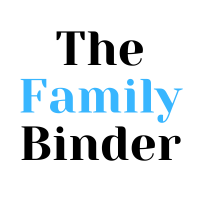Imagine your family searching frantically for vital documents during a crisis, only to find chaos and confusion. An estate planning binder eliminates this stress by keeping your important paperwork organized, secure, and accessible when it matters most.
This guide will show you everything you need to know about creating, updating, and maintaining an estate planning binder for 2025 and beyond. Discover common pitfalls, learn the benefits, and follow easy steps to ensure your loved ones are always prepared.
What Is an Estate Planning Binder and Why You Need One
Imagine facing a family emergency and not knowing where to find crucial documents. That’s where an estate planning binder steps in. This tool is more than just a folder—it’s your go-to organizer for every legal, financial, and personal document your loved ones may need. By centralizing information, you give your family peace of mind and ensure they’re prepared for any situation.
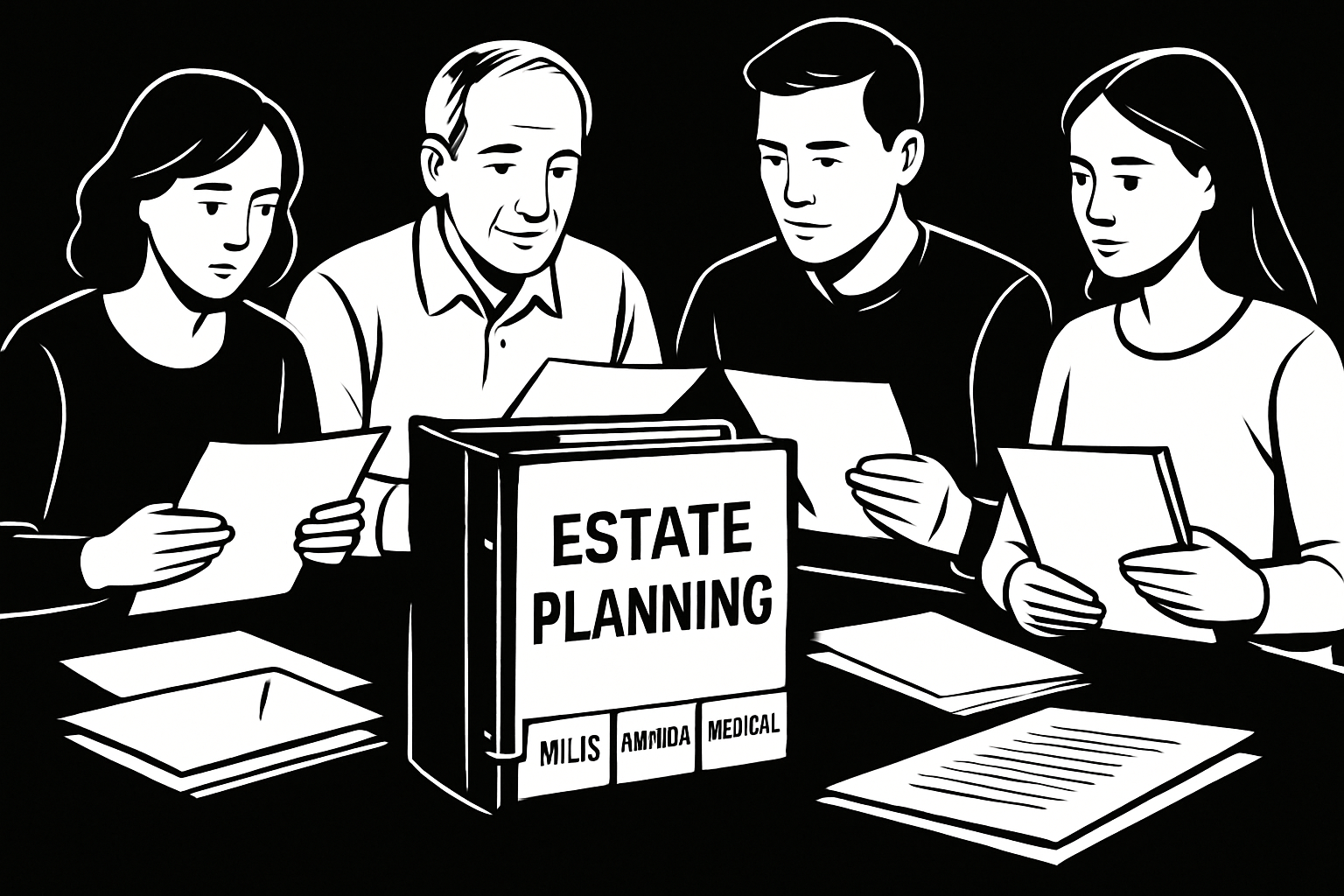
Definition and Purpose of an Estate Planning Binder
An estate planning binder is a dedicated organizer designed to store all your essential legal, financial, and personal documents in one place. Unlike a random stack of papers or a basic folder, this binder uses dividers, labels, and checklists to keep everything orderly and easy to access.
The main purpose of an estate planning binder is to provide clarity and control during life’s unpredictable moments. It ensures that your wishes and instructions are always available, reducing confusion and stress for families and executors. For a deeper dive into how to set up your own, check out this Comprehensive estate planning guide.
Key Benefits of Organizing Estate Documents
Keeping your estate documents organized in a binder offers several key benefits:
- Prevents lost or misplaced documents during emergencies.
- Eases the emotional burden on family members and beneficiaries.
- Streamlines the probate process, cutting down on legal headaches.
- Reduces the chance of family disputes by making your intentions clear.
- Ensures your wishes and instructions are always accessible.
With an estate planning binder, you make future transitions smoother and less stressful for everyone involved.
Who Should Use an Estate Planning Binder?
An estate planning binder isn’t just for retirees or the wealthy. It’s valuable for:
- Anyone with assets, dependents, or specific wishes.
- Families, single parents, and caregivers.
- Executors and trustees managing someone’s estate.
Whether you’re starting a family, caring for aging parents, or planning your own legacy, an estate planning binder offers security and organization.
Common Scenarios Where a Binder Proves Essential
Consider how helpful an estate planning binder is in situations like:
- Sudden illness, incapacity, or unexpected death.
- Natural disasters or emergencies at home.
- Moving, downsizing, or entering assisted living.
In these moments, having immediate access to organized documents can make all the difference.
Expert Insights and Statistics
Expert advice backs up the importance of an estate planning binder. According to AARP, over 60% of Americans do not have their estate documents organized, leaving families vulnerable. Legal professionals consistently recommend using a binder to reduce probate costs and avoid delays.
Taking steps now to create an estate planning binder can help you avoid common pitfalls and give your loved ones the gift of clarity and confidence when it matters most.
Essential Documents to Include in Your Estate Planning Binder
An estate planning binder is only as effective as the documents it holds. To ensure your loved ones and executors have everything they need, it’s crucial to be thorough and organized. Including the right paperwork in your estate planning binder helps minimize confusion, legal hurdles, and emotional stress during difficult times.
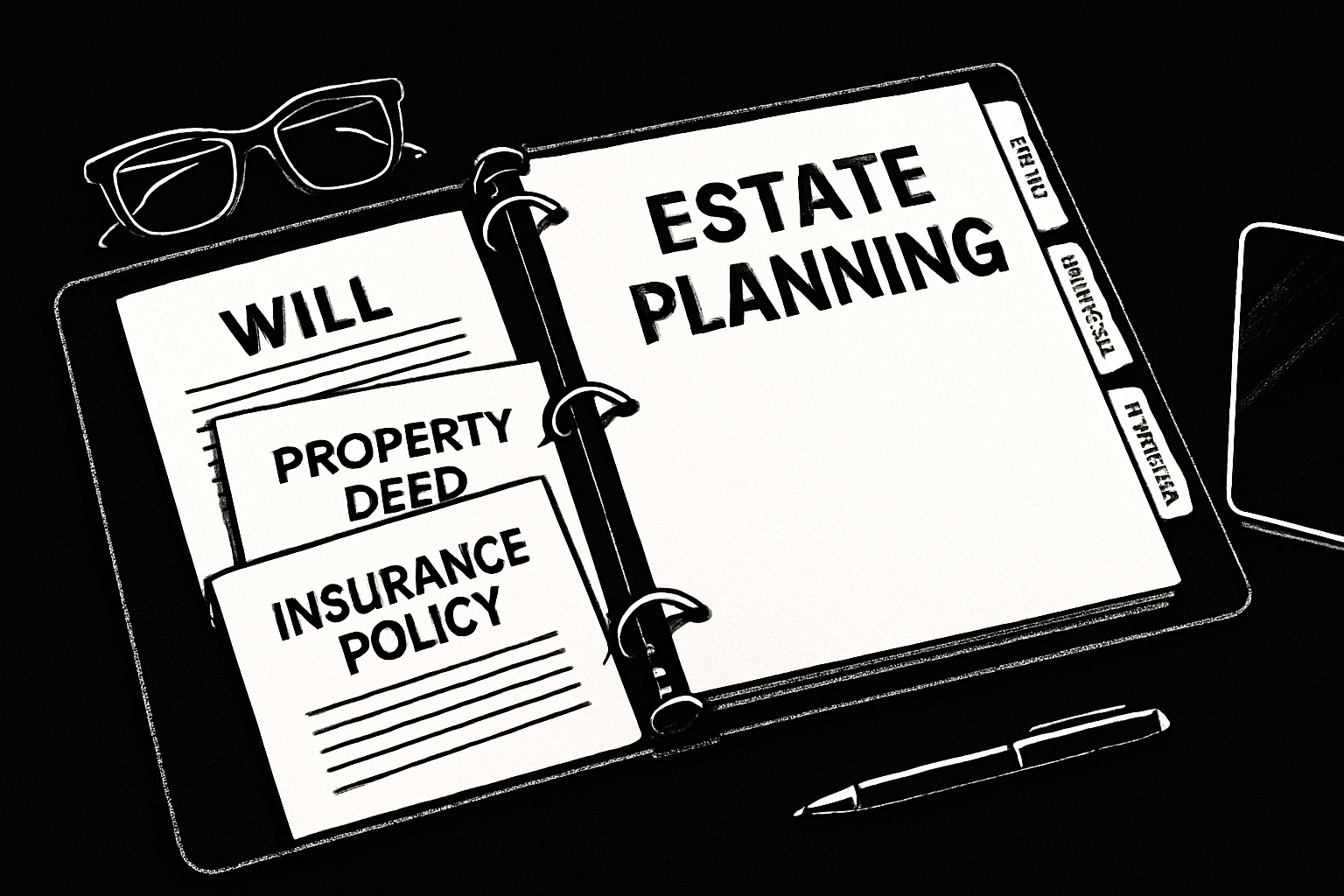
Core Legal Documents
Start your estate planning binder with the foundational legal documents. These are critical for outlining your wishes and ensuring your estate is managed as you intend.
- Last Will and Testament: Details how your assets should be distributed and names guardians for minors.
- Living Trusts: Allows assets to bypass probate and provides management if you become incapacitated.
- Durable Power of Attorney: Appoints someone to handle your finances if you’re unable.
- Healthcare Power of Attorney: Assigns a trusted person to make medical decisions on your behalf.
- Advance Healthcare Directive/Living Will: States your preferences for end-of-life care.
Having these in your estate planning binder gives your family peace of mind and clear direction.
Financial and Property Records
Next, gather financial and property documents. These help your loved ones quickly locate accounts and understand your assets.
- Bank account information: Include account numbers and contact details.
- Investment and retirement statements: List IRAs, 401(k)s, stocks, and bonds.
- Real estate deeds and mortgage documents: Prove ownership and clarify outstanding loans.
- Insurance policies: Include life, health, home, and auto.
- Property tax records: Useful for estate valuation and tax planning.
By organizing these in your estate planning binder, you simplify the process for your heirs and reduce the risk of missed or lost assets.
Personal Identification and Vital Records
Personal identification is essential for legal and administrative procedures. Your estate planning binder should contain copies of these vital records:
- Birth and marriage certificates
- Social Security cards
- Passports and driver’s licenses
- Military records and discharge papers
- Adoption or divorce decrees
Access to these documents speeds up the estate process and helps beneficiaries claim what’s rightfully theirs.
Final Arrangements and Letters of Instruction
Including your final wishes in your estate planning binder ensures your preferences are honored. This section can be deeply personal and provide comfort to your family.
- Funeral and burial instructions: Specify preferences for services or memorials.
- Prepaid funeral contracts: Attach receipts or agreements.
- Letters to family or executors: Share special wishes, personal messages, or instructions not found elsewhere.
A clear outline of your intentions helps loved ones navigate difficult decisions and avoid misunderstandings.
Digital Assets and Online Accounts
Today, digital assets are just as important as physical ones. Your estate planning binder should include:
- A list of digital accounts: Email, social media, banking, and subscriptions.
- Passwords and access instructions: Consider using a password manager and leaving directions in your binder.
- Digital estate planning forms: Some platforms offer tools for designating legacy contacts or account closure.
Documenting these ensures nothing valuable is overlooked and accounts can be properly managed or closed.
Additional Supporting Documents
Beyond the basics, your estate planning binder should have documents that support and clarify your estate plan.
- Contact lists: Attorneys, financial advisors, executors, and beneficiaries.
- Inventory of personal property: Jewelry, collectibles, vehicles.
- Recent tax returns: Useful for financial review and settling debts.
- Outstanding debts: Credit cards, loans, and obligations.
Comprehensive supporting documents make it easier for executors to fulfill their responsibilities efficiently.
Examples and Best Practices
How you organize your estate planning binder matters as much as what’s in it. Use tabbed sections and labeled dividers for clarity. Include originals and copies where appropriate, but clearly label each. Regularly review and update your binder, especially after major life events.
For more ideas on what to include and how to arrange your estate planning binder, check out the Top 10 essential documents for families. Following best practices ensures your binder remains a reliable resource for years to come.
Step-by-Step: How to Assemble Your Estate Planning Binder
Creating an estate planning binder can feel overwhelming, but breaking it down into manageable steps makes the process much easier. With a clear plan, you’ll not only organize your documents but also bring peace of mind to your loved ones. Let’s walk through each stage, ensuring your estate planning binder is comprehensive and up to date.
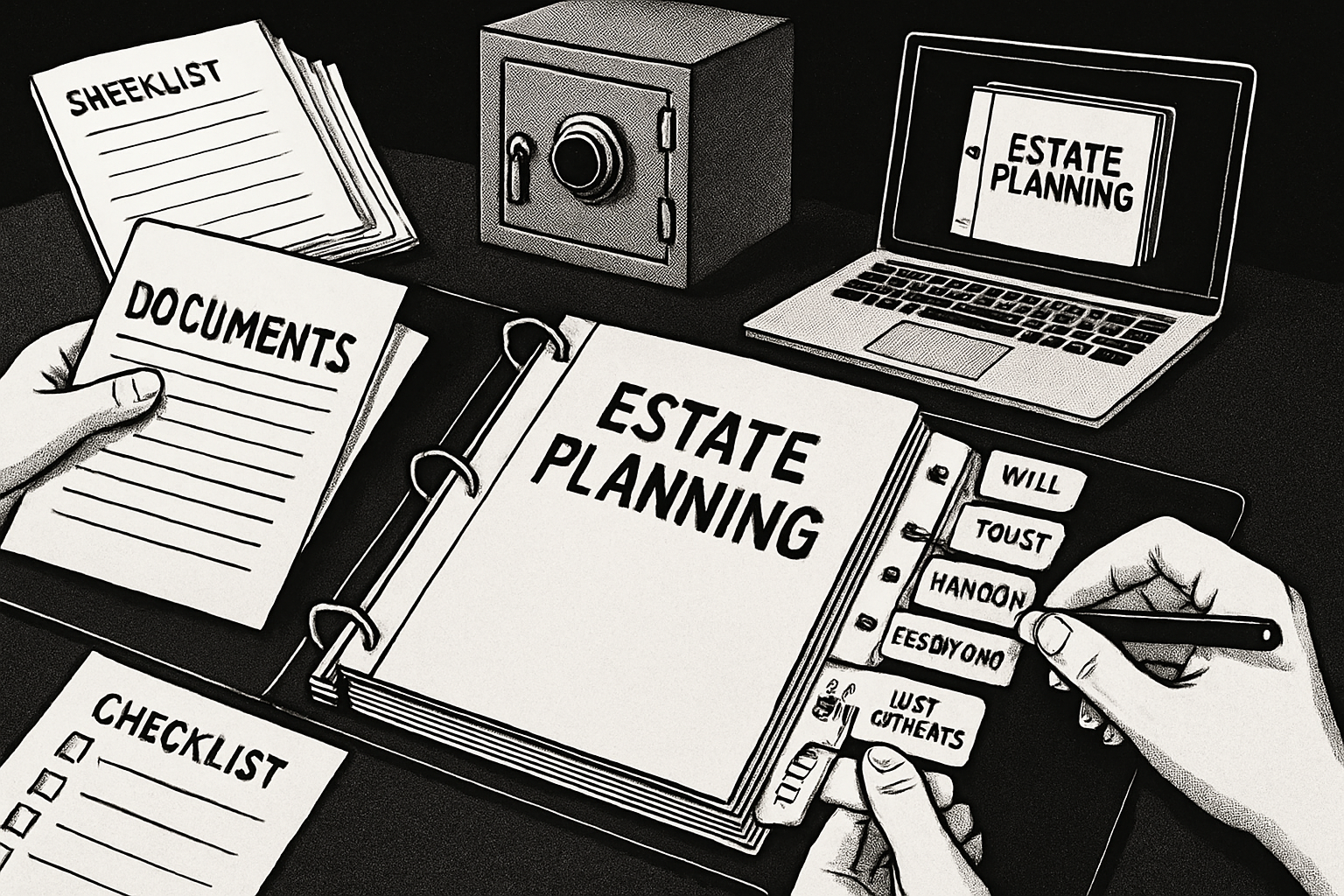
Step 1: Gather and Sort Your Documents
Start by collecting all the documents you’ll need for your estate planning binder. Make a checklist of essentials: wills, trusts, powers of attorney, healthcare directives, financial records, property deeds, insurance policies, and personal IDs. Don’t forget digital account information and important contacts.
If you’re missing any paperwork, reach out to banks, attorneys, or government offices. Sort your documents into categories—legal, financial, medical, and personal—for easier assembly. For a hands-on guide, see How The Family Binder simplifies estate planning. Starting organized now saves headaches later and ensures your estate planning binder serves its purpose.
Step 2: Choose the Right Binder and Supplies
Select a sturdy binder, ideally 2–3 inches thick, with D-rings for easy page turning. Look for sheet protectors to keep originals and copies safe, plus labeled dividers and pockets for organization. Consider a fireproof and waterproof binder or box for extra protection.
Supplies checklist:
- Durable binder (2–3 inch, D-ring)
- Sheet protectors
- Labeled dividers/tabs
- Zippered pouches for small items
- Table of contents page
The right supplies keep your estate planning binder tidy and accessible, making updates and reviews much smoother.
Step 3: Arrange Documents Chronologically and by Category
Now, place your documents in order. Start with the most critical items—wills, living trusts, and powers of attorney—at the front. Next, group supporting documents by category: financial, medical, insurance, property, and digital assets.
Use color-coded tabs or labels for quick navigation. Chronological arrangement (most recent first) within each section helps you and your family find the latest versions fast. A well-ordered estate planning binder saves precious time during stressful situations.
Step 4: Label and Index Each Section
Create a clear table of contents at the front of your estate planning binder. Each section should have a descriptive label: “Legal Documents,” “Financial Records,” “Medical Directives,” etc. Use bold, easy-to-read tabs for each divider.
An index not only speeds up document retrieval but also helps others navigate your estate planning binder if you’re not available. Proper labeling prevents confusion and ensures your wishes are followed exactly.
Step 5: Secure and Store Your Binder Safely
Once assembled, store your estate planning binder in a safe yet accessible location. Good options include a home safe, a locked filing cabinet, or a bank safe deposit box. Avoid places prone to water or fire damage.
Tell at least one trusted family member or executor where your estate planning binder is kept. For extra security, consider keeping a backup copy (physical or digital) in a separate location. Security ensures your sensitive information stays protected but available when most needed.
Step 6: Update and Review Regularly
Set a calendar reminder to review your estate planning binder annually or whenever major life events occur (marriage, divorce, birth, or death). Replace outdated documents, update beneficiary lists, and securely destroy old versions.
Regular maintenance means your estate planning binder always reflects your current wishes and legal requirements. Consistency is key to avoiding problems down the road and keeping your loved ones informed.
Step 7: Communicate with Loved Ones and Advisors
Share the existence and location of your estate planning binder with key people—family members, executors, and trusted advisors. Provide them with clear instructions on when and how to access it.
Open communication ensures your estate planning binder can be used effectively in emergencies. Keeping everyone informed prevents confusion and speeds up decision-making during critical times.
Real-Life Example
Consider the story of a family who faced a sudden medical emergency. Because the parent had a fully organized estate planning binder, the family quickly accessed healthcare directives, insurance policies, and legal documents.
This preparation helped avoid probate delays, reduced stress, and allowed the family to focus on care instead of paperwork. A well-prepared estate planning binder truly makes a difference when it matters most.
Digital vs. Physical Estate Planning Binders: Pros, Cons, and Best Practices
Choosing the right estate planning binder format can feel overwhelming. Should you stick with a classic physical binder or embrace digital solutions? Each option offers unique strengths—and a few drawbacks.
Physical Binders
A physical estate planning binder is tangible and simple to use. It doesn’t require tech skills, making it a great choice for those who prefer paper or have limited digital access.
Pros:
- Easy to flip through, label, and organize
- No risk of hacking or digital obsolescence
- Immediate access for family members
Cons:
- Vulnerable to loss from fire, flood, or theft
- Requires physical storage space
- Updates mean printing and replacing pages
A physical estate planning binder brings peace of mind, but it’s important to consider its vulnerability to disasters.
Digital Binders
A digital estate planning binder is editable, searchable, and easy to update. You can store it in the cloud, making it accessible from anywhere.
Advantages:
- Quick edits and updates
- Can be encrypted for extra security
- Easy sharing with family or executors
Drawbacks:
- Needs strong passwords and regular backups
- Risks include hacking, password loss, or technology changes
- May be tricky for those uncomfortable with computers
A digital estate planning binder is ideal if you value flexibility and remote access.
Hybrid Approach
Many families find a hybrid estate planning binder system works best. This means keeping both a physical binder and a digital backup.
- Scan and save important documents as PDFs
- Use secure cloud storage like Google Drive or Dropbox
- Print critical files for your physical binder
For a deeper dive, check out this comparison of The Family Binder vs traditional estate planning.
Hybrid solutions offer redundancy, reducing the risk of losing access when it matters most.
Security and Privacy Considerations
Securing your estate planning binder is essential. For digital binders, always use encryption and strong, unique passwords. Limit access to trusted individuals only.
Physical binders should be stored in a locked, fireproof safe. Inform family or executors about the binder’s location, but never leave it in plain sight.
No matter the format, keep your estate planning binder’s privacy a top priority.
Practical Tips
- Use a password manager to organize digital asset logins
- Keep clear instructions for digital access in your physical binder
- Review and update security settings regularly
- Set calendar reminders for regular binder maintenance
By following these best practices, you ensure your estate planning binder is always current, protected, and easy for loved ones to use when needed.
The Family Binder: A Modern Solution for Comprehensive Estate Organization
Imagine a digital tool that brings order, clarity, and peace of mind to your estate planning binder process. The Family Binder is designed to do just that. As a fillable PDF, it guides you step-by-step through organizing vital family, financial, and estate documents, all in one secure place. Instead of hunting for scattered paperwork, everything you need is structured and accessible—ready for life’s unexpected moments.
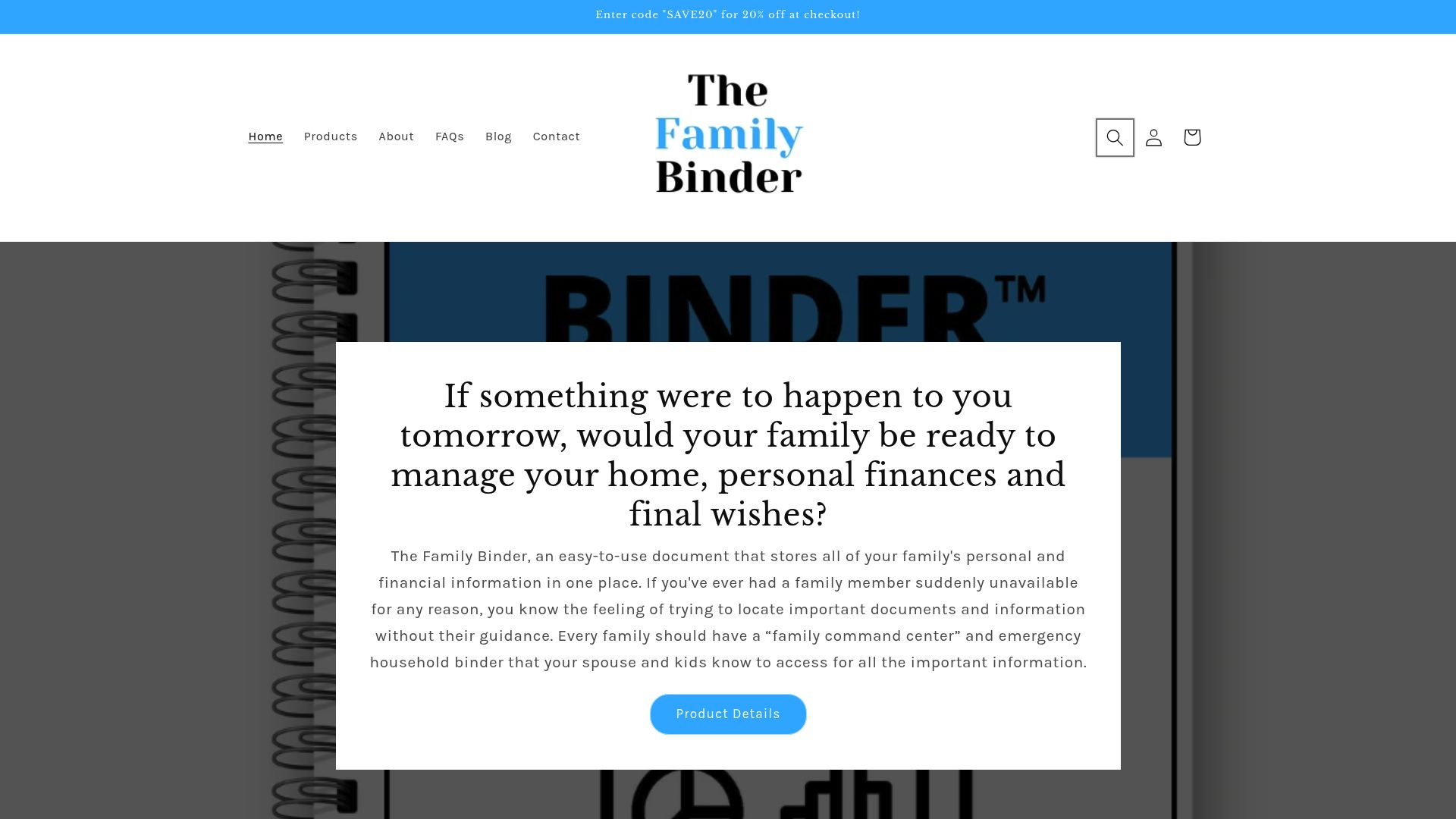
The Family Binder includes seven thoughtfully organized sections that cover every aspect of family, home, financial, and estate information. With guided prompts, you’ll never worry about missing a crucial detail. Its editable format makes updates simple as life changes. Prefer paper? You can print it out to create a physical estate planning binder. This flexibility ensures your documents are always current and at your fingertips.
What sets The Family Binder apart is its all-in-one approach. It provides instant digital access, lifetime use, and requires no financial or legal expertise. This tool complements your traditional estate planning binder by offering actionable, up-to-date details for executors and family members. As estate planning trends shift, more people are seeking streamlined, digital solutions, according to Estate Planning Statistics 2025.
Families, caregivers, retirees, and anyone looking for peace of mind will appreciate how The Family Binder simplifies emergencies. For example, when one family faced a sudden medical crisis, they quickly located insurance and legal documents, thanks to this tool. Getting started is easy: purchase access, download the file, and follow the prompts. You’ll soon have a comprehensive estate planning binder that protects your legacy and supports your loved ones.
Expert Tips for Keeping Your Estate Planning Binder Current and Effective
Keeping your estate planning binder up to date is the most important step you can take to ensure your wishes are honored and your loved ones are protected. A well-maintained binder saves time, reduces stress, and prevents last-minute scrambles during life’s unexpected moments.
Regular Review and Updating
Set a recurring calendar reminder to review your estate planning binder annually or after major life events like marriage, divorce, a new child, or a death in the family. Laws change, and so do your personal circumstances. Regular updates ensure every document inside stays accurate and legally valid.
Check for expired documents, outdated contact details, and changes in beneficiaries. Replace old versions and shred outdated originals securely. Staying proactive keeps your estate planning binder relevant and reliable.
Communication with Key Stakeholders
Make sure your executors, trustees, and family members know about your estate planning binder and where to find it. Share clear instructions on how to access the binder, whether it's physical, digital, or both.
Open communication minimizes confusion and delays when the binder is needed most. Consider creating a simple instruction sheet for loved ones to follow in an emergency.
Professional Assistance
Consult with estate planning attorneys or financial advisors to review your estate planning binder for accuracy and completeness. Professionals can help you avoid common legal pitfalls and ensure your documents meet current legal standards.
For foundational knowledge or to double-check your understanding, check out this Basics of Estate Planning guide. Expert help can make a significant difference in your long-term planning.
Security and Backup Strategies
Store your estate planning binder in a secure, fireproof, and waterproof location. Home safes or bank safe deposit boxes are popular choices. Equally important, keep a digital backup encrypted and password-protected.
Share backup access with a trusted individual to safeguard against loss or disaster. Always update digital passwords and security questions as needed.
Common Mistakes to Avoid
Avoid these frequent errors to keep your estate planning binder effective:
- Forgetting to update after major life changes
- Not informing loved ones of the binder’s location
- Mixing originals and copies without clear labeling
- Storing only in one location without a backup
Addressing these pitfalls ensures your estate planning binder is always ready when needed.
Resources for Ongoing Organization
Leverage downloadable checklists, templates, and online tools for continual organization. For more guidance on organizing paperwork for your heirs, visit Organizing Financial Documents for Heirs.
Apps and cloud storage services can help you keep digital copies organized and accessible. Consistently using these resources supports a well-maintained estate planning binder.
Final Thoughts on Long-Term Organization
Maintaining your estate planning binder is an ongoing process, not a one-time event. The peace of mind it brings is invaluable for your family. A well-kept binder can save time, money, and unnecessary stress during life’s most challenging moments. Commit to regular updates and clear communication—your loved ones will thank you.
If you’re ready to finally have all your important documents in one place—and make life easier for your loved ones—there’s no better time to get organized. We’ve covered how a well-prepared estate planning binder brings real peace of mind and saves your family from stress and confusion. You don’t have to start from scratch or feel overwhelmed by the process. With The Family Binder, you can easily collect, organize, and update everything in a printable, fillable format that’s made for families like yours. Take the next step toward clarity and security—Download Now.
